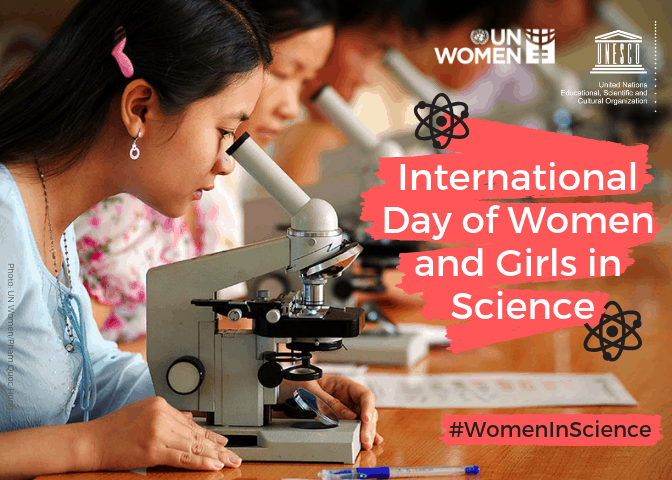
- About
- News
- Programs
- Grants
- Events
- Register
- Resources
- Donate


FIRST in Texas, statewide partners, and even robotics teams are working diligently to introduce more girls to STEM fields and give them a place to explore their dreams of changing the world through research, experimentation, and discovery. One of our goals is to help expose the bright minds of girls and young women to the array of STEM career opportunities.
This growth is female participation is an exciting trend the FIRST in Texas community will continue to nurture and grow.
 February 11 is the International Day of Women and Girls in Science, a day designed to promote science careers among women while recognizing that, despite the promising statistics we just mentioned, it remains that less than 30 percent of researchers around the world are women. Even though women occupy 75 percent of health-related jobs and 47 percent of life science positions, they remain underrepresented in the physical sciences and other STEM fields. We still have a lot of work to do, and given that so many FIRST alumni go on to pursue STEM careers (68 percent of female FIRST alumni) have careers in STEM fields), getting more girls involved in FIRST is a great start.
February 11 is the International Day of Women and Girls in Science, a day designed to promote science careers among women while recognizing that, despite the promising statistics we just mentioned, it remains that less than 30 percent of researchers around the world are women. Even though women occupy 75 percent of health-related jobs and 47 percent of life science positions, they remain underrepresented in the physical sciences and other STEM fields. We still have a lot of work to do, and given that so many FIRST alumni go on to pursue STEM careers (68 percent of female FIRST alumni) have careers in STEM fields), getting more girls involved in FIRST is a great start.
One reason why FIRST participation is such a big boost to girls and young women is the opportunity to work on exciting projects which are designed to make them think outside the box, work together, and communicate well. New themes each season spark interest and lead to pathways of discovery that may turn into an incredible career in chemistry, biology, agriculture, medicine, astronomy, or something else. Even if your FIRST daughter doesn’t go on to become a scientist, she’s still learning the skills that will help her succeed in any career: teamwork, problem-solving, time management, conflict resolution, innovative and creative thinking, perseverance, and leadership.
As Dean Kamen often says, “FIRST is the only sport where everyone can go pro.”
FIRST and a STEM major can also help her earning potential. Employees in STEM careers tend to make more than similarly trained employees in non-STEM fields, but what’s especially interesting is that STEM training leads to higher salaries even in non-STEM jobs.
For more inspiration, share this list of the 50 most important women in science with the girls in your life, or this list of 10 women in science history, which shows that women have been making an impact on the scientific community—and all of us—for hundreds of years. The first article points out that even though only three percent of tenured physics professors in the United States are women, those women are making tremendous advances in the field. Women have always had a place in science, and our job is to make sure our girls know that. It’s an exciting career for anyone, and today’s girls have an incredible opportunity to leave their mark on the world in science.